INVENTORY FORECASTING
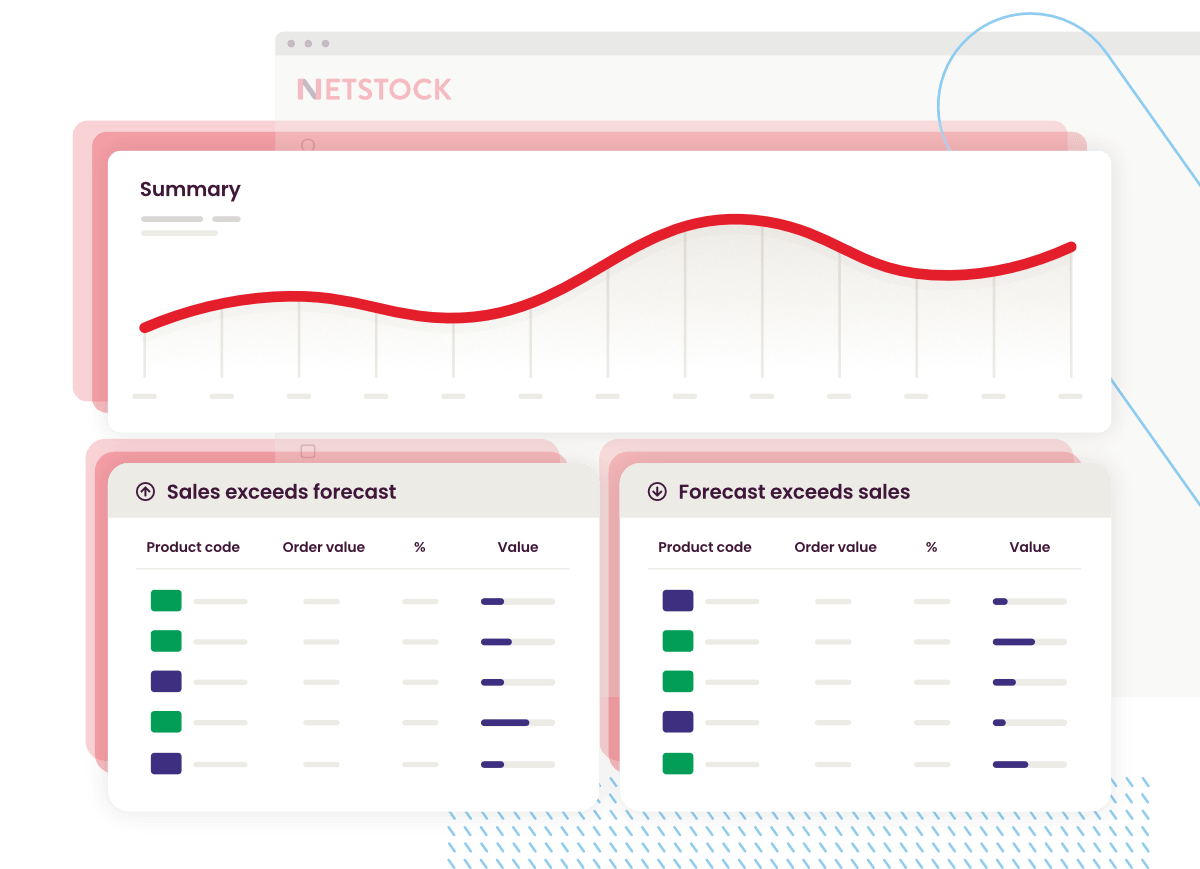
Introducing Netstock’s AI Pack
Netstock’s AI tools help solve specific problems and generate better results - making inventory management faster and easier. With one click, you get an AI expert who collaborates daily to identify and resolve issues, providing actionable recommendations - saving you time to focus on what matters.

Netstock’s forecasting and demand planning
Predictability
Eliminate guesswork with accurate demand forecasts that anticipate dynamic market demand & supply risk
Simplicity
Easily run forecasting models for best and worst-case scenarios using inventory forecasting tools
Speed
Integrate order data with ERP systems for smarter, real-time demand, inventory, and production visibility
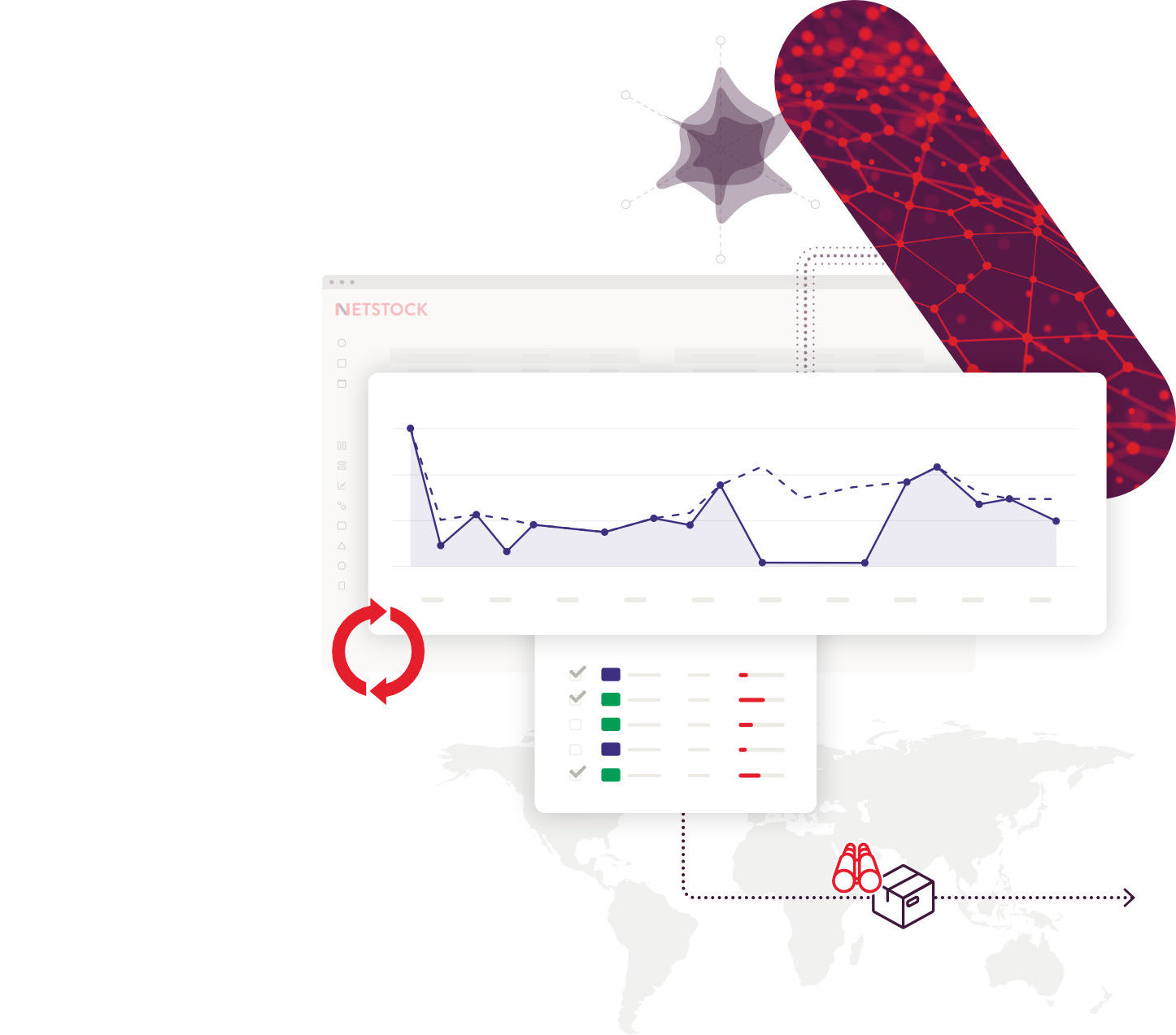
Build better
forecasts — faster
Netstock automatically assigns the best demand forecasting models for each item, customer, region, unit, price, cost, or margin. Smart analytics engines “learn” over time to improve inventory forecast accuracy and aid decision-making. Quickly review or adjust forecasts for individual SKUs, any level of product, or channel aggregation. Factor in lost sales, promotions, and other non-recurring events to produce better sales, inventory, procurement, and manufacturing plans.
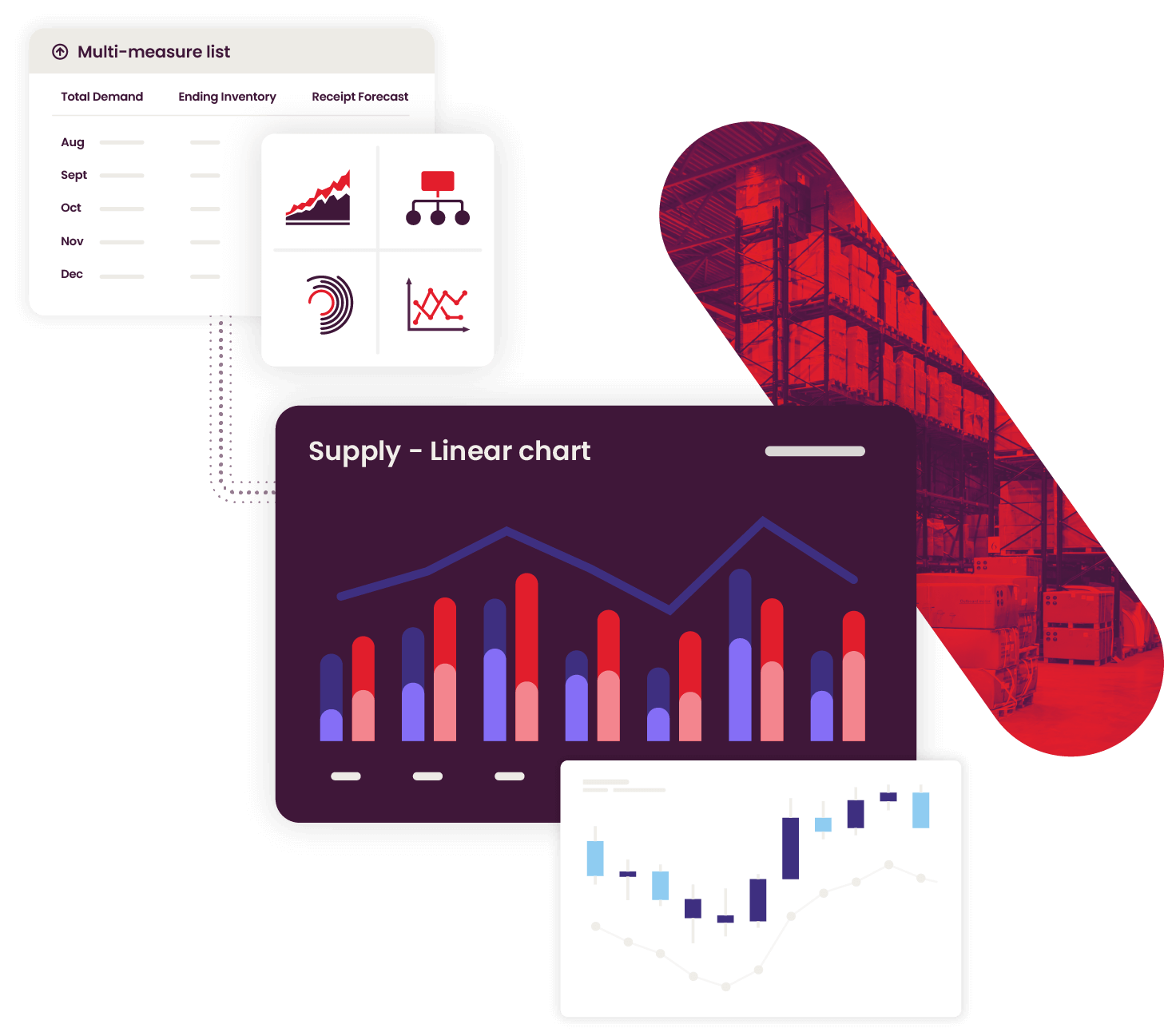
Confidently predict future forecasts
Improve inventory planning and measure the impact of future stock projections with inventory forecasts based on stock data, item forecasts, and inventory policy settings. Using your current stock levels, you can forecast recommended supplier orders up to a year in advance.
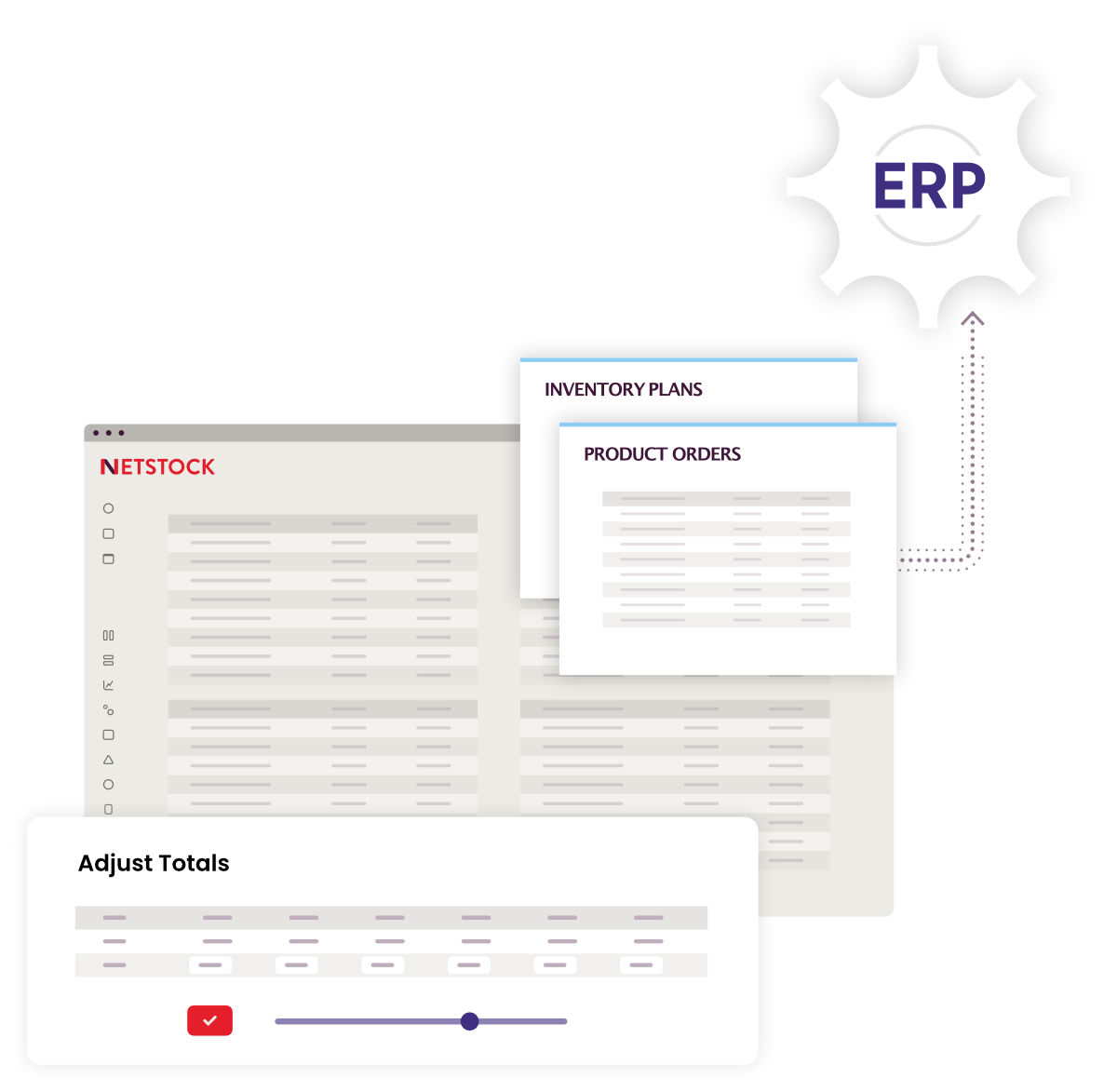
Drive smarter decisions across your business
Netstock Predictor IA product – an advanced inventory management system – automatically generates inventory plans and product orders, directly porting order information to your ERP system. Make multi-item manual adjustments to forecasts and corresponding plans and synchronize sales forecasts with inventory, procurement, operations, and finance teams.
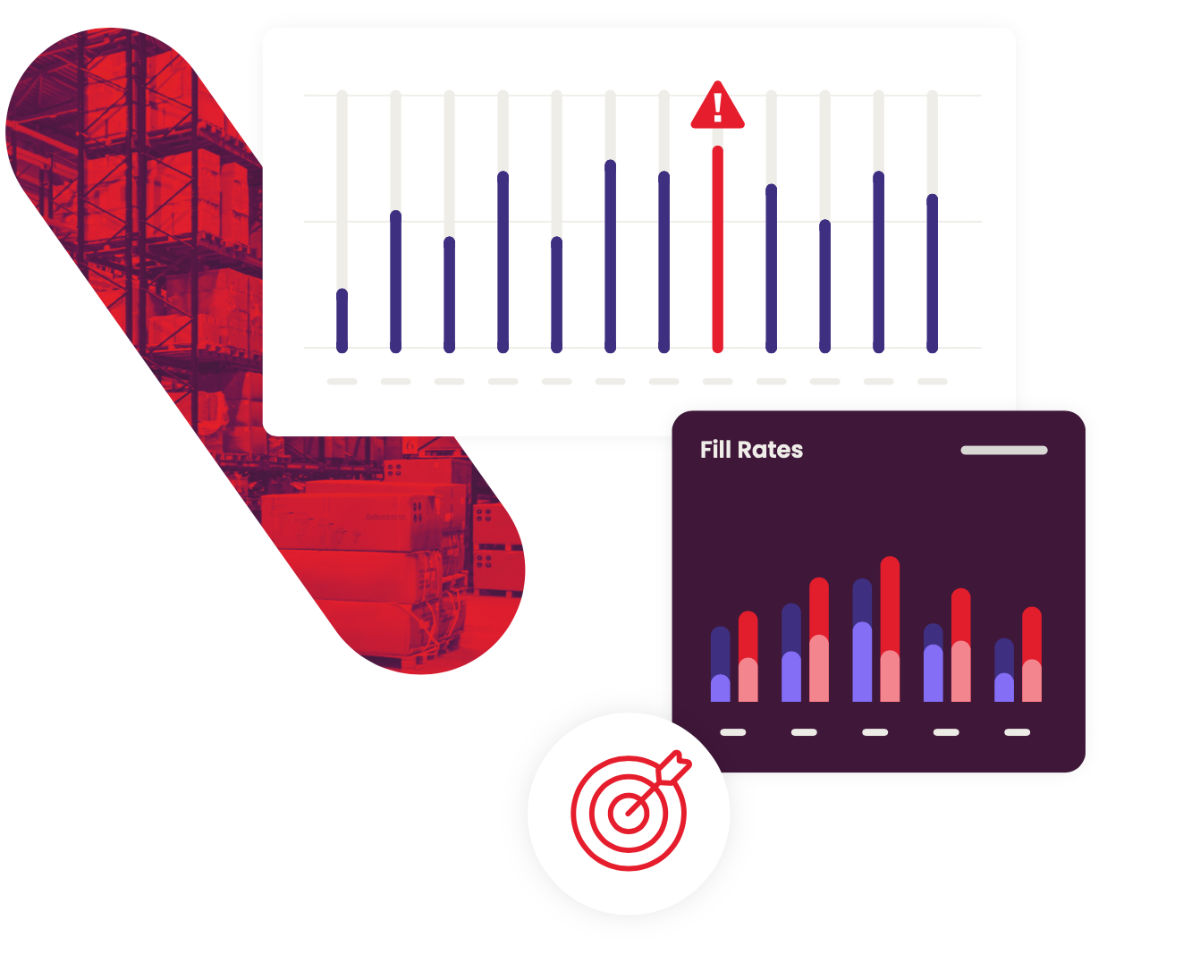
Quickly measure forecasting accuracy
Netstock’s forecasting capability empowers you to measure and improve your forecasting results over time through effective inventory optimization. Monthly assessments track progress, buffer stock adapts to forecast risk, and stock level reacts to your forecast accuracy per product per warehouse, ensuring your inventory management matches customer demand and business goals.
Our solutions
Netstock has the solutions you need to help you achieve and manage optimal supply and demand levels.
FAQs about inventory forecasting
Inventory forecasting involves analyzing past sales data, market trends, and seasonal demand patterns to predict future inventory needs. Businesses typically use a combination of historical sales trends, demand forecasting models (such as time series analysis or machine learning algorithms), and real-time data to make informed decisions. Modern inventory forecasting software automates this process, reducing errors and improving efficiency.
Key steps for forecasting inventory:
- Collect historical sales data
- Identify demand patterns (seasonality, trends, fluctuations)
- Choose a forecasting model (moving averages, exponential smoothing, AI-driven tools)
- Integrate real-time data for dynamic adjustments
- Continuously monitor and refine forecasts based on market changes
Using an AI-powered inventory forecasting tool ensures accurate predictions, minimizes stock-outs, and prevents overstocking—helping businesses optimize inventory levels efficiently.
Improving inventory forecasting accuracy requires a mix of data-driven strategies, technology, and continuous optimization. By continuously monitoring and optimizing your forecasting approach, you can reduce errors, prevent stock imbalances, and ensure a more efficient supply chain.
Here’s how you can enhance your predictions:
- Use advanced forecasting models: Leverage AI, machine learning, or statistical models like ARIMA and LSTM for more precise predictions.
- Integrate real-time data: Incorporate live sales trends, supplier lead times, and market conditions to adjust forecasts dynamically.
- Analyze historical data effectively: Identify patterns in past sales and adjust forecasts to account for seasonality, promotions, and market shifts.
- Enhance collaboration: Align forecasting with sales, marketing, and supply chain teams to improve demand planning.
- Invest in the right software: Modern inventory forecasting tools automate data analysis and provide actionable insights to refine inventory decisions.
LSTM (Long Short-Term Memory) and ARIMA (AutoRegressive Integrated Moving Average) are two different forecasting models, each with its own strengths:
- ARIMA: A statistical model best suited for short-term, linear time series forecasting when historical data follows a clear pattern. It requires data stationarity and manual parameter tuning.
- LSTM: A deep learning model that excels at capturing complex, non-linear patterns in large datasets. It is highly effective for long-term forecasting and can handle irregular trends better than ARIMA.
If your inventory demand follows predictable, linear trends, ARIMA may provide quick and reliable forecasts. If demand is volatile, influenced by multiple factors, or requires long-term forecasting, LSTM offers superior accuracy by learning from complex patterns.
Many modern inventory forecasting tools integrate AI-driven models like LSTM while allowing statistical approaches like ARIMA for comparison. The best choice depends on data complexity, forecast duration, and business needs.
 Inventory
Inventory  Inventory
Inventory  Inventory
Inventory  Supplier
Supplier  Demand
Demand  Capacity
Capacity  S&OP
S&OP